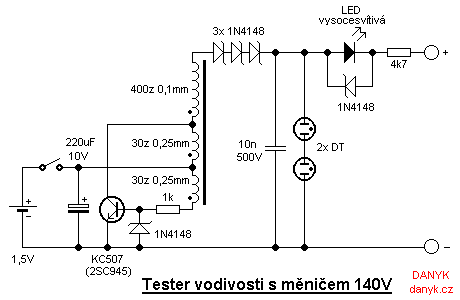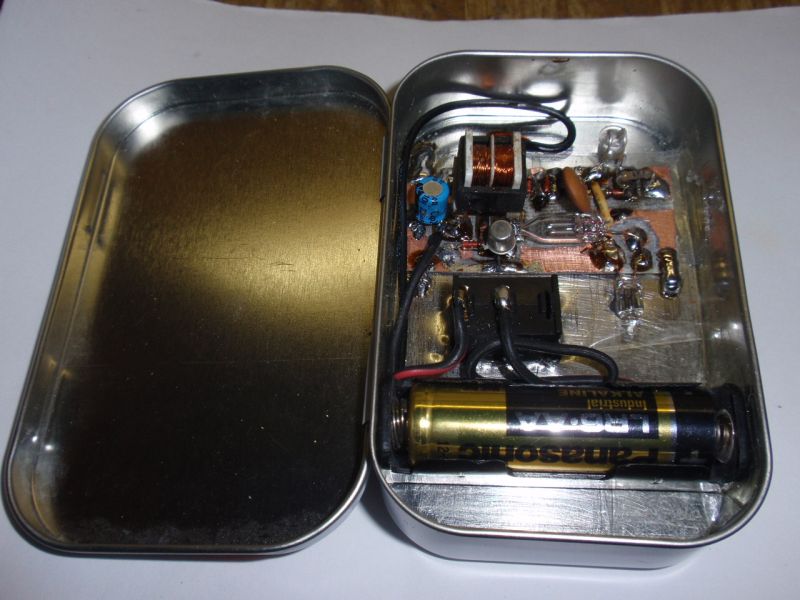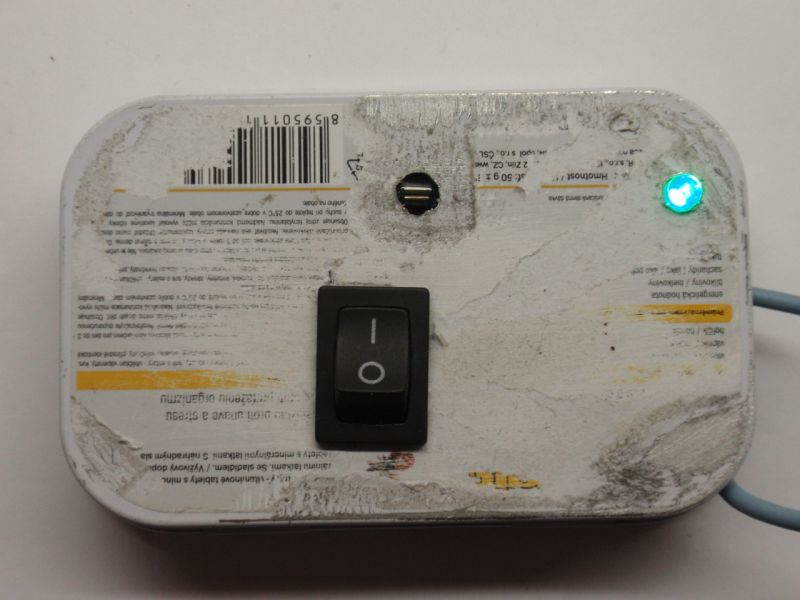This is basically a conductivity tester, but differs in that it uses large test voltage (140V).
It is suitable wherever you can't use common testers, like multimeters and similar.
High voltage conductivity tester is good for testing HV diodes, multipliers, neon lamps, LED and LED modules, capacitors, insulation, Zener diodes,
transils, search the cold end of IHVT, DST secondary and testing
its diodes. Together with parallel voltmeter it is usable to measure HV diodes voltage drop, Zener voltage of zener diodes, voltage drops of LEDs and LED
modules, transils and operating voltage of neon glow lamps.
Along with serial mili / microammeter it allows measurement of very high resistance and leakage currents.
(Multimeters have a built-in diode tester, which measures the diode voltage drop, but the maximum voltage
is only 2V, which for these purposes very low.)
Using the high voltage conductivity tester is very simple. This is a primitive self-oscillating inverter. Output voltage is limited using
two neon glow lamps in series to about 140V. One of neon lamps also signals the open circuit voltage and good battery.
LED indicates the current flow. Due to the small current it is good to use superbright type. High voltage conductivity tester is powered by a 1.5 V AA battery
or other cell with 1.2 to 1.5 V voltage capable of delivering 100mA. Current consumption of tester is 30-100 mA.
Tester begins work at 0.7 V. Output short circuit current
is about 1 mA. Transformer is wound on a ferrite core from the AC EMI filter with split spool. On one
side primary and auxiliary windings (both 30 turns, 0.25 mm) is wound. On the other side of the spool secondary (400 turns, 0.1 mm) is wound. The core
is EE, middle column 2.5 x 6mm, with no air gap.





